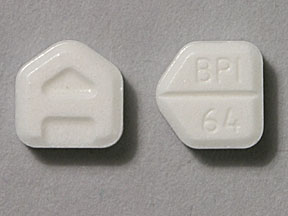Generic Ativan Availability
Last updated on Sep 10, 2025.
Ativan is a brand name of lorazepam, approved by the FDA in the following formulation(s):
ATIVAN (lorazepam - injectable;injection)
ATIVAN (lorazepam - tablet;oral)
-
Manufacturer: BAUSCH
Approved Prior to Jan 1, 1982
Strength(s): 0.5MG [RLD] [AB], 1MG [RLD] [AB], 2MG [RLD] [AB]
Is there a generic version of Ativan available?
Yes. The following products are equivalent to Ativan:
lorazepam injectable;injection
-
Manufacturer: FRESENIUS KABI USA
Approval date: November 18, 2024
Strength(s): 2MG/ML [AP] -
Manufacturer: HOSPIRA
Approval date: April 12, 1994
Strength(s): 2MG/ML [AP], 4MG/ML [AP] -
Manufacturer: INTL MEDICATION SYS
Approval date: November 15, 2004
Strength(s): 2MG/ML [AP] -
Manufacturer: RISING
Approval date: July 23, 1998
Strength(s): 2MG/ML [AP]
lorazepam tablet;oral
-
Manufacturer: ANI PHARMS
Approval date: December 13, 2006
Strength(s): 0.5MG [AB], 1MG [AB], 2MG [AB] -
Manufacturer: AUROBINDO PHARMA
Approval date: December 22, 2017
Strength(s): 0.5MG [AB], 1MG [AB], 2MG [AB] -
Manufacturer: GRAVITI PHARMS
Approval date: July 24, 2025
Strength(s): 0.5MG [AB], 1MG [AB], 2MG [AB] -
Manufacturer: LEADING
Approval date: July 30, 2007
Strength(s): 0.5MG [AB], 1MG [AB], 2MG [AB] -
Manufacturer: OXFORD PHARMS
Approval date: May 10, 2006
Strength(s): 0.5MG [AB], 1MG [AB], 2MG [AB] -
Manufacturer: SANDOZ
Approval date: April 21, 1987
Strength(s): 0.5MG [AB], 1MG [AB], 2MG [AB] -
Manufacturer: SUN PHARM INDS LTD
Approval date: August 29, 2001
Strength(s): 0.5MG [AB], 1MG [AB], 2MG [AB] -
Manufacturer: WATSON LABS
Approval date: October 31, 1991
Strength(s): 0.5MG [AB], 1MG [AB], 2MG [AB]
Note: Fraudulent online pharmacies may attempt to sell an illegal generic version of Ativan. These medications may be counterfeit and potentially unsafe. If you purchase medications online, be sure you are buying from a reputable and valid online pharmacy. Ask your health care provider for advice if you are unsure about the online purchase of any medication.
See also: Generic Drug FAQ.
More about Ativan (lorazepam)
- Check interactions
- Compare alternatives
- Pricing & coupons
- Reviews (486)
- Drug images
- Latest FDA alerts (5)
- Side effects
- Dosage information
- Patient tips
- During pregnancy
- Support group
- Drug class: benzodiazepine anticonvulsants
- Breastfeeding
Patient resources
Other brands
Professional resources
Other brands
Lorazepam Intensol, Ativan Injection, Loreev XR
Related treatment guides
Related/similar drugs
Glossary
| Term | Definition |
|---|---|
| Drug Patent | A drug patent is assigned by the U.S. Patent and Trademark Office and assigns exclusive legal right to the patent holder to protect the proprietary chemical formulation. The patent assigns exclusive legal right to the inventor or patent holder, and may include entities such as the drug brand name, trademark, product dosage form, ingredient formulation, or manufacturing process A patent usually expires 20 years from the date of filing, but can be variable based on many factors, including development of new formulations of the original chemical, and patent infringement litigation. |
| Drug Exclusivity | Exclusivity is the sole marketing rights granted by the FDA to a manufacturer upon the approval of a drug and may run simultaneously with a patent. Exclusivity periods can run from 180 days to seven years depending upon the circumstance of the exclusivity grant. |
| RLD | A Reference Listed Drug (RLD) is an approved drug product to which new generic versions are compared to show that they are bioequivalent. A drug company seeking approval to market a generic equivalent must refer to the Reference Listed Drug in its Abbreviated New Drug Application (ANDA). By designating a single reference listed drug as the standard to which all generic versions must be shown to be bioequivalent, FDA hopes to avoid possible significant variations among generic drugs and their brand name counterpart. |
| AB | Products meeting necessary bioequivalence requirements. Multisource drug products listed under the same heading (e.g. identical active ingredients, dosage form, and routes of administration) and having the same strength (see Therapeutic Equivalence-Related Terms, Pharmaceutical Equivalents) generally will be coded AB if a study is submitted demonstrating bioequivalence. In certain instances, a number is added to the end of the AB code to make a three character code (e.g. AB1, AB2, AB7). Three-character codes are assigned only in situations when more than one reference listed drug of the same strength has been designated under the same heading. Two or more reference listed drugs are generally selected only when there are at least two potential reference drug products which are not bioequivalent to each other. If a study is submitted that demonstrates bioequivalence to a specific listed drug product, the generic product will be given the same three-character code as the reference listed drug it was compared against. |
| AP | Injectable aqueous solutions and, in certain instances, intravenous non-aqueous solutions. It should be noted that even though injectable (parenteral) products under a specific listing may be evaluated as therapeutically equivalent, there may be important differences among the products in the general category, Injectable; Injection. For example, some injectable products that are rated therapeutically equivalent are labeled for different routes of administration. In addition, some products evaluated as therapeutically equivalent may have different preservatives or no preservatives at all. Injectable products available as dry powders for reconstitution, concentrated sterile solutions for dilution, or sterile solutions ready for injection are pharmaceutical alternative drug products. They are not rated as therapeutically equivalent (AP) to each other even if these pharmaceutical alternative drug products are designed to produce the same concentration prior to injection and are similarly labeled. Consistent with accepted professional practice, it is the responsibility of the prescriber, dispenser, or individual administering the product to be familiar with a product's labeling to assure that it is given only by the route(s) of administration stated in the labeling. |
Further information
Always consult your healthcare provider to ensure the information displayed on this page applies to your personal circumstances.

